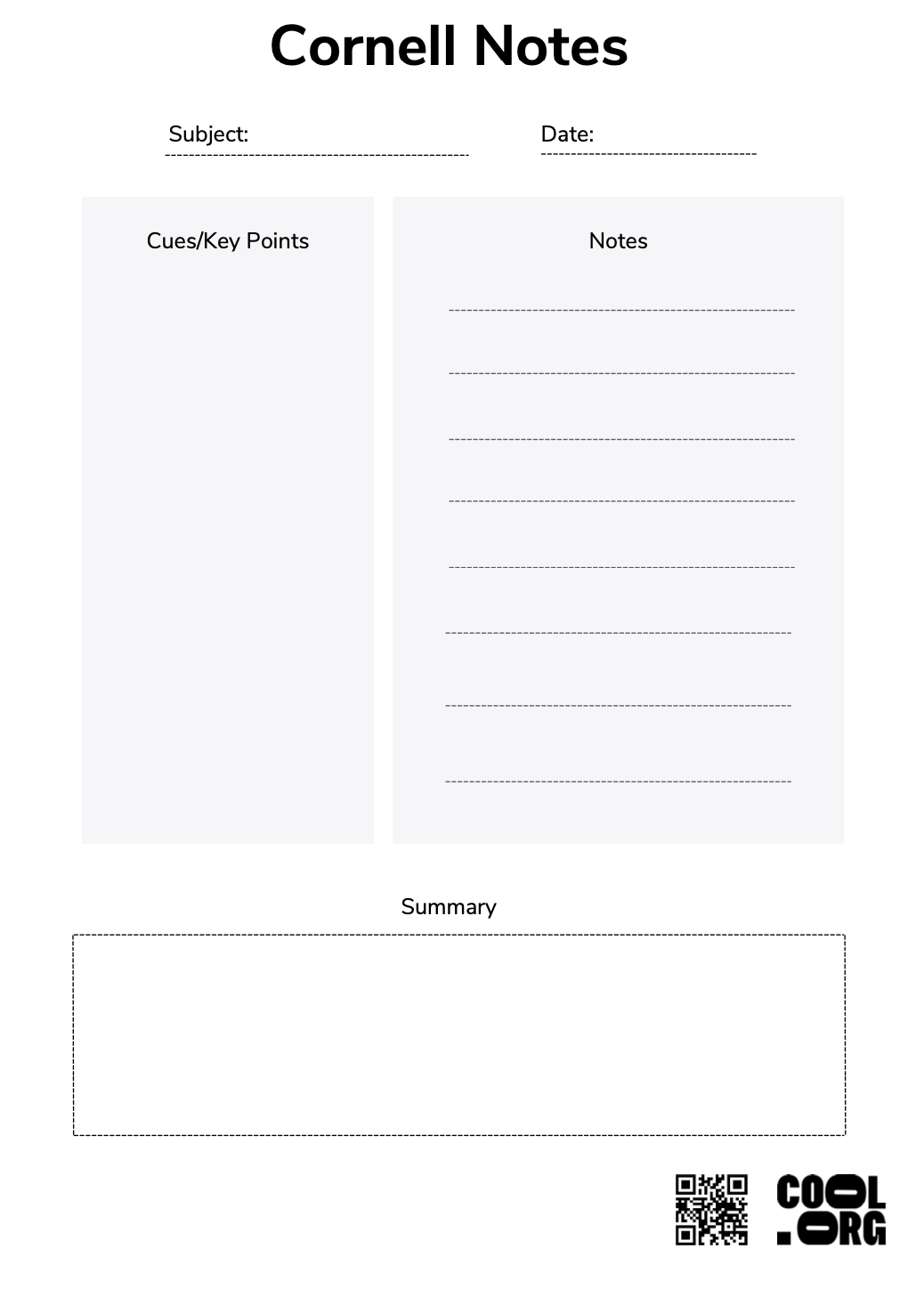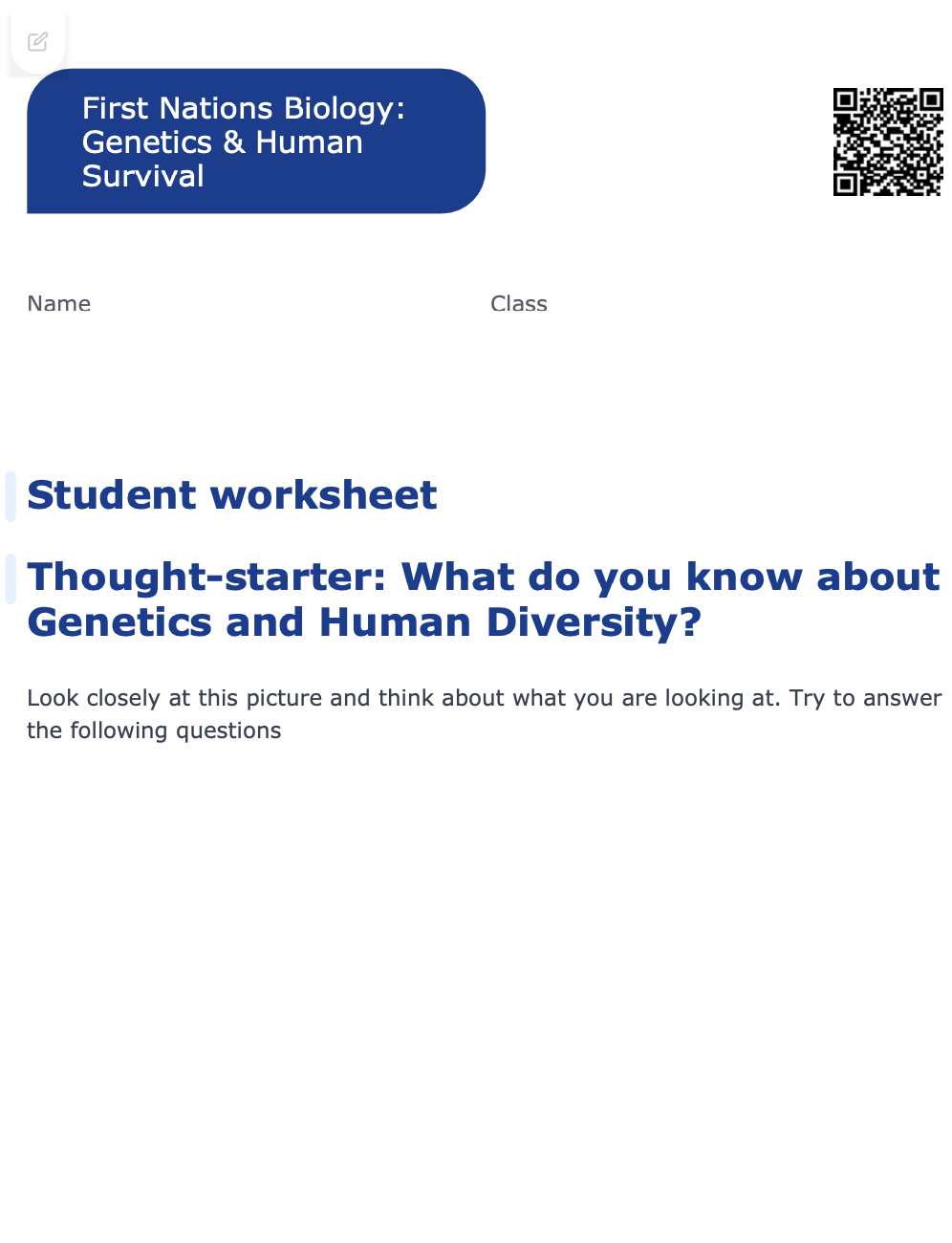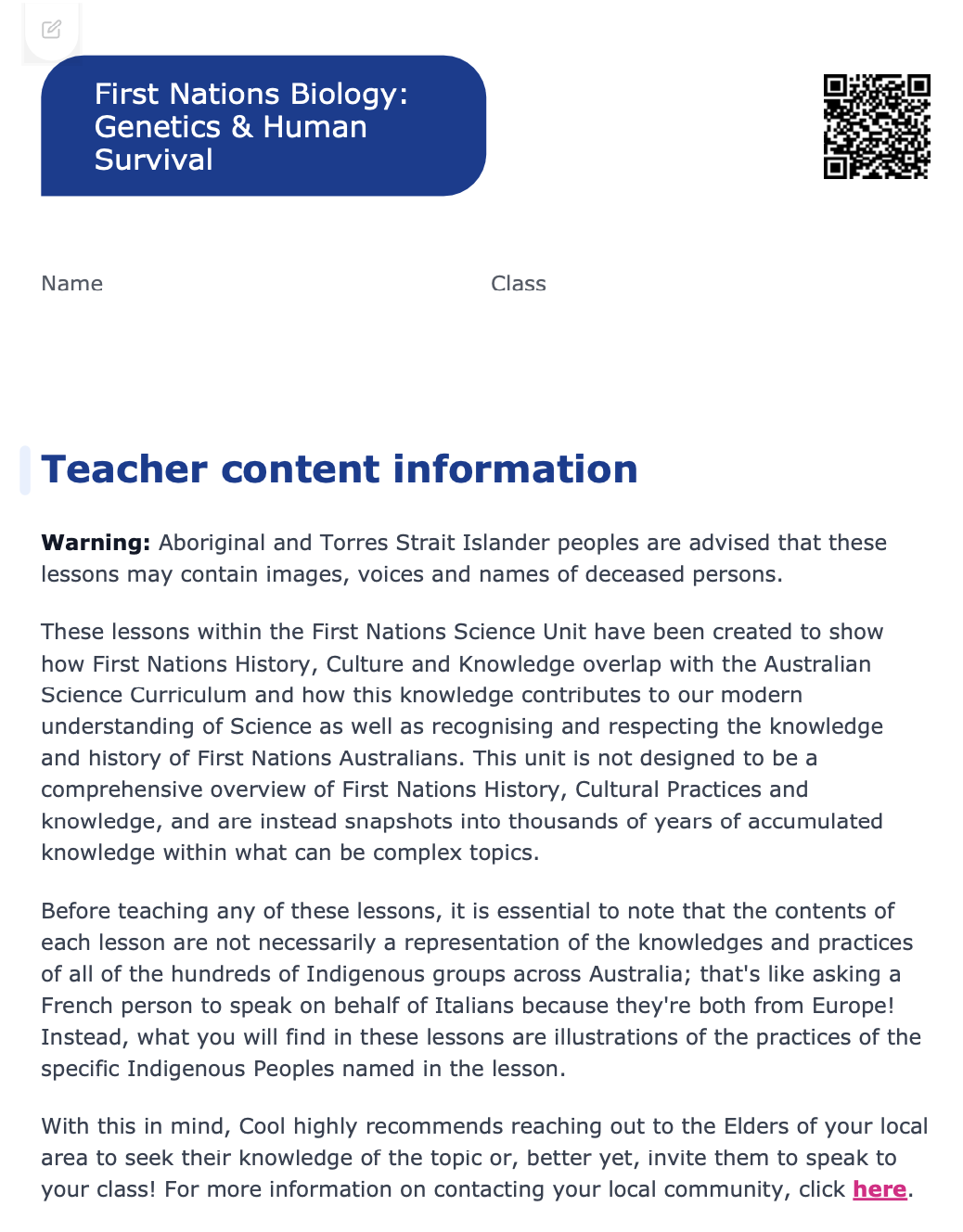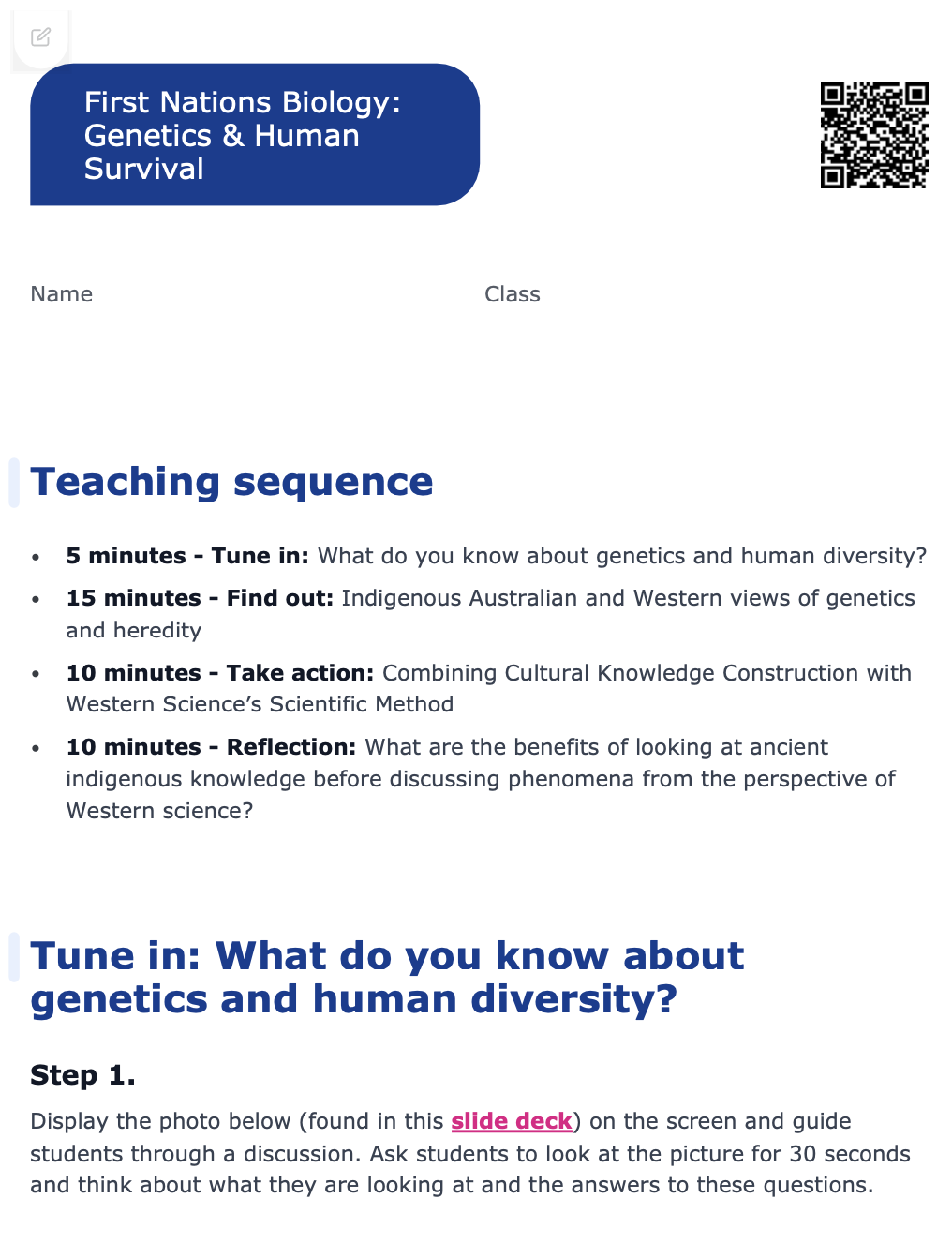Lesson summary
Exploring genetics through First Nations peoples knowledge of heredity, evidenced by strict adherence to kinship, family structures and marriage laws.
Learning intentions:
Students will...
- explore the role of DNA and genes in heredity and how understandings of human heredity from a First Nations cultural perspective compare to the current Western scientific understanding of genetics.
Success criteria:
Students can...
- articulate the role of genetics in the survival of the human species
- identify the critical discoveries in Western science regarding genetics since the mid-19th century
- reflect on the difference between First Nations knowledge construction and Western science “scientific method”.
Lesson guides and printables
View Supporting Resources


Curriculum links
Select your curriculum from the options below.
Lesson details
Curriculum Mapping
Australian Curriculum (v9.0) content descriptions:
Science:
Students learn to:
- Explain the function of DNA and genes in heredity and predict patterns of Mendelian inheritance (AC9S10U01)
General capabilities: Literacy, Intercultural Understanding
Syllabus outcomes: SC5-15LW
Cross-curriculum priority: Aboriginal and Torres Strait Islander Histories and Cultures.
Relevant parts of Year 10 Science achievement standards: Students can explain processes that underpin heredity and genetic diversity and describe the evidence supporting the theory of evolution by natural selection.
Resources Required
- Computer
- Cornell Notes Template
- First Nations Biology Lesson 3 slide deck containing images from the lesson
- Projector
Skills
This lesson is designed to build students’ competencies in the following skills:
- collaboration
- critical thinking
- curiosity
- adaptability
- ethical understanding
- empathy
- intercultural understanding
- creativity
- communication
- reflection.
Additional Info
Warning: Aboriginal and Torres Strait Islander peoples are advised that these lessons may contain images, voices and names of deceased persons.
Level of teacher scaffolding: Medium - Open-ended questioning, facilitation of class discussion, options for taking notes in different formats.
This is an original Cool+ lesson.





Welcome back!
Don't have an account yet?
Log in with:
Create your free Cool.org account.
Many of our resources are free, with an option to upgrade to Cool+ for premium content.
Already have an account?
Sign up with:
By signing up you accept Cool.org's Terms and Conditions(Opens in new tab) and Privacy Policy(Opens in new tab).